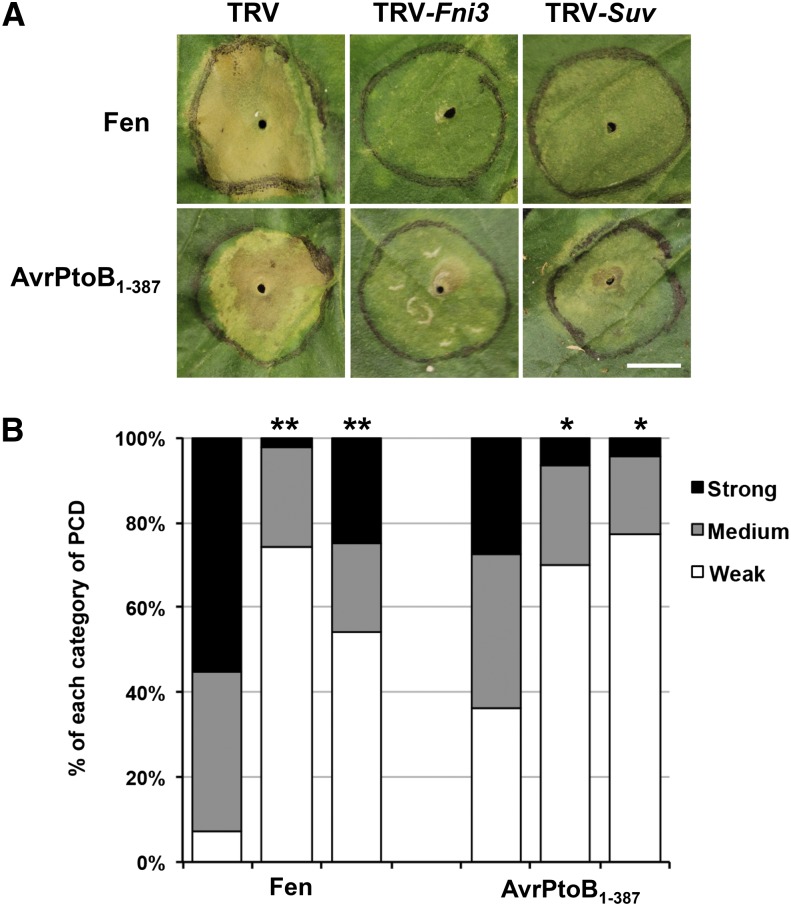Figure 5.
Fni3 and Suv Positively Regulate PCD Associated with Fen-Mediated Immunity.
(A) VIGS of Fni3 or Suv gene significantly diminished PCD initiated by transient expression of Fen or the Rsb elicitor, AvrPtoB1-387, in N. benthamiana. The TRV vector was used to knock down expression of Fni3 (TRV-Fni3) or Suv (TRV-Suv). TRV vector only was used as a control. The PCD was initiated by syringe-infiltrating Agrobacterium carrying T-DNA with the genes Fen or AvrPtoB1-387 into the N. benthamiana leaves. The infiltrated area of the leaf is outlined by a black circle. Photographs were taken 3 d after infiltration. Bar = 1 cm.
(B) The degree of reduction in PCD elicited by transient expression of Fen and AvrPtoB1-387 in N. benthamiana. The degree of PCD induced by Fen or AvrPtoB1-387 as shown on the y axis was monitored visually and classified into three categories: strong (75 to 100%), partial (25 to 75%), or weak (<25%). The degree of PCD of each treatment was statistically analyzed by Fisher’s exact test using the number of spots in each category (*P < 0.05 and **P < 0.01). Asterisks indicate significant reduction of PCD by silencing either Fni3 (second lane of each PCD elicitor) or Suv (third lane of each PCD elicitor) when compared with TRV-only plants (first lane of each PCD elicitor). The results are the sum of four independent experiments in which at least 15 infiltrations for each PCD elicitor were performed on TRV-only, TRV-Fni3, and TRV-Suv plants, respectively.

